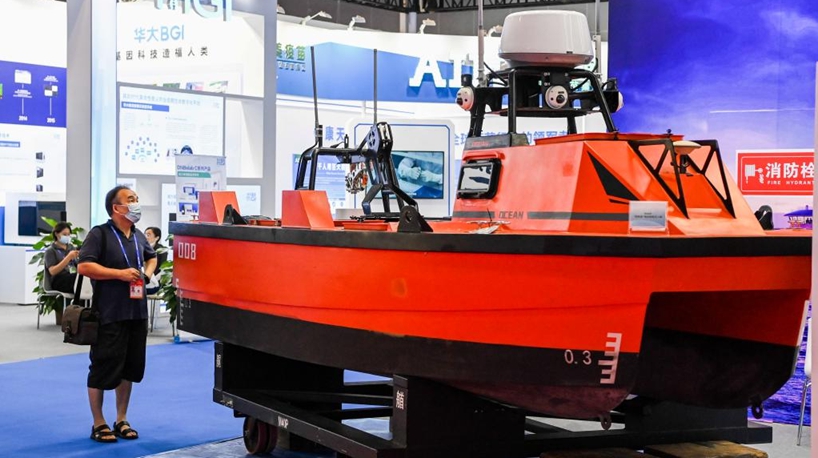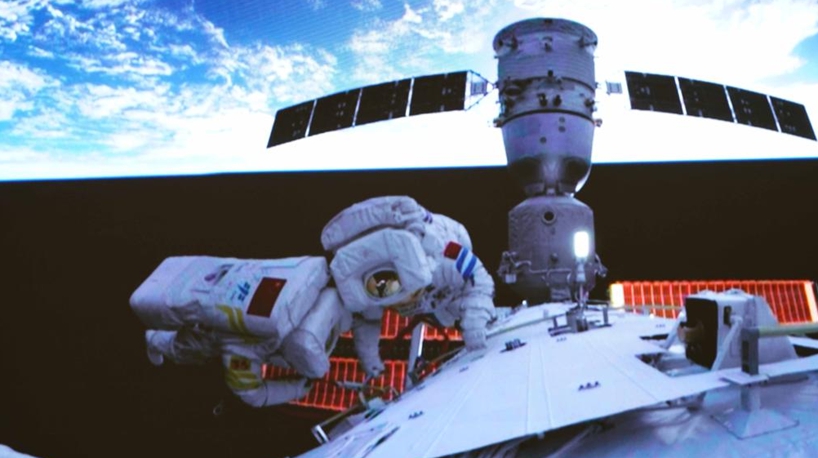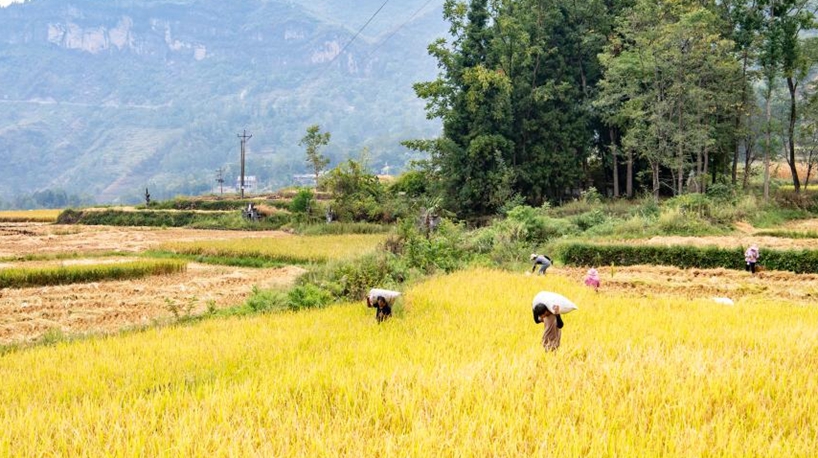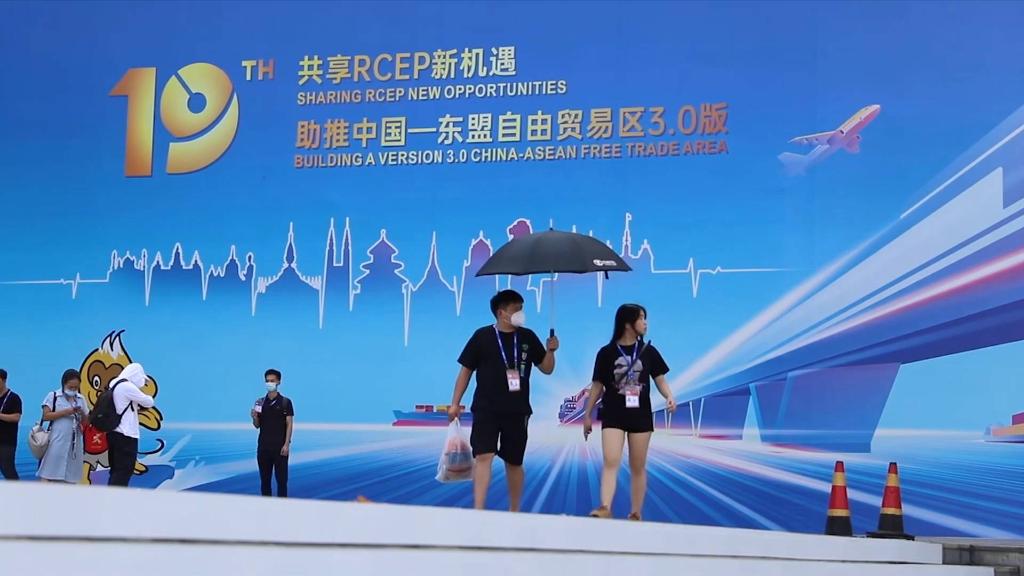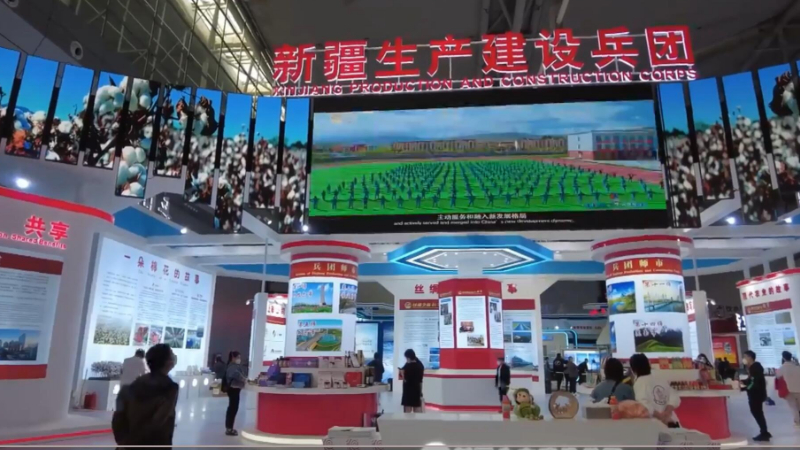* The seventh China-Eurasia Expo, which opened Monday in Urumqi, capital of northwest China's Xinjiang Uygur Autonomous Region, has seen deals worth over 960 billion yuan (about 138 billion U.S. dollars) signed so far, which hit a record level.
* Customs data shows that, in the first eight months of 2022, Xinjiang's foreign trade exceeded 145.5 billion yuan, with an increase of 49.6 percent yearly.
* Xinjiang has established cooperative economic relationships with 190 countries and regions.
URUMQI, Sept. 21 (Xinhua) -- At an exhibition booth of the ongoing China-Eurasian Expo, Tursun Mettursun and his brother earnestly promoted their self-made wool mattresses to clients.
"This is the first time that I'm attending the expo. I hope to broaden my horizons and make more friends," said Tursun Mettursun from Qira County, northwest China's Xinjiang Uygur Autonomous Region.
He has reached initial cooperation agreements with some clients through the online platform and face-to-face talks over the past few days.
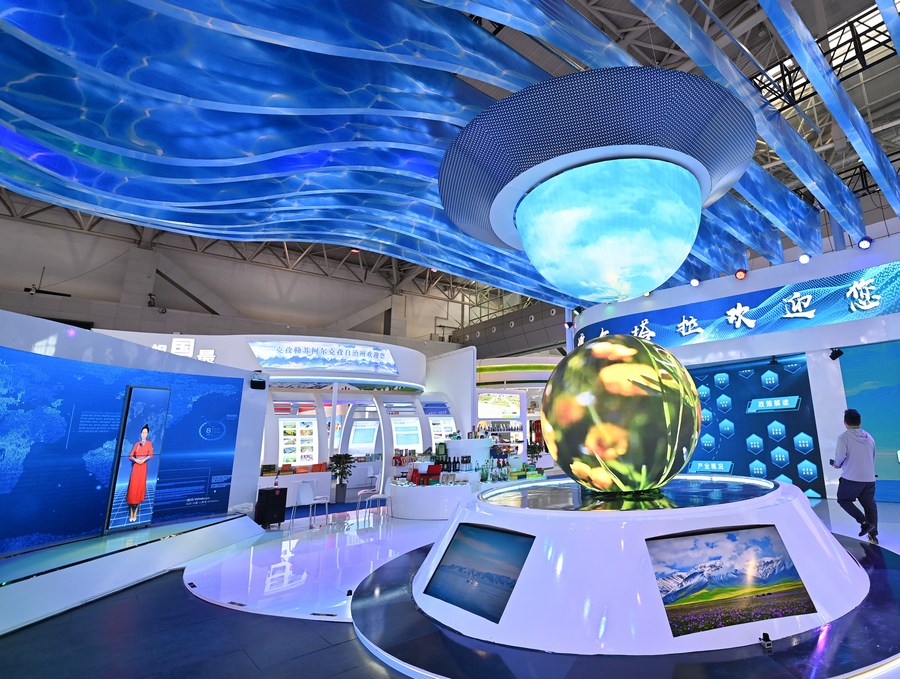
Photo taken on Sept. 19, 2022 shows a pavilion at the seventh China-Eurasia Expo in Urumqi, capital of northwest China's Xinjiang Uygur Autonomous Region. (Xinhua/Li Xiang)
The seventh China-Eurasia Expo, which opened Monday in Urumqi, the region's capital, has seen deals worth over 960 billion yuan (about 138 billion U.S. dollars) signed so far, which hit a record level, said the organizers. The figure is more than three times that of the last expo held in 2018.
The fruitful results of the expo have shown the vitality of the vast Xinjiang region, which is striving to develop itself as the core area of the Silk Road Economic Belt, given its unique geographical advantage.
About 1,500 km from Urumqi, a cross-border e-commerce import and export commodities exhibition and trading center in the Kashgar comprehensive bonded zone is under construction and will be put into use by the end of the year.
"We are building a cross-border e-commerce industrial park to attract enterprise and promote comprehensive growth of various business models. This year, we plan to achieve an import and export value of 600 million yuan in cross-border e-commerce," said Ma Haitao, director of the bonded zone management committee.
The bonded zone focuses on developing the modern service industry and advanced manufacturing. It realized a foreign trade value of 12.3 billion yuan in the first eight months.
The Kashgar Economic Development Zone, which includes the bonded zone, had 4,559 market entities by the end of July, initially forming a cluster of industries, including electronics assembly and processing, textiles and garments, trade and logistics, and providing 42,000 jobs.
Customs data shows that, in the first eight months of 2022, Xinjiang's foreign trade exceeded 145.5 billion yuan, with an increase of 49.6 percent yearly.
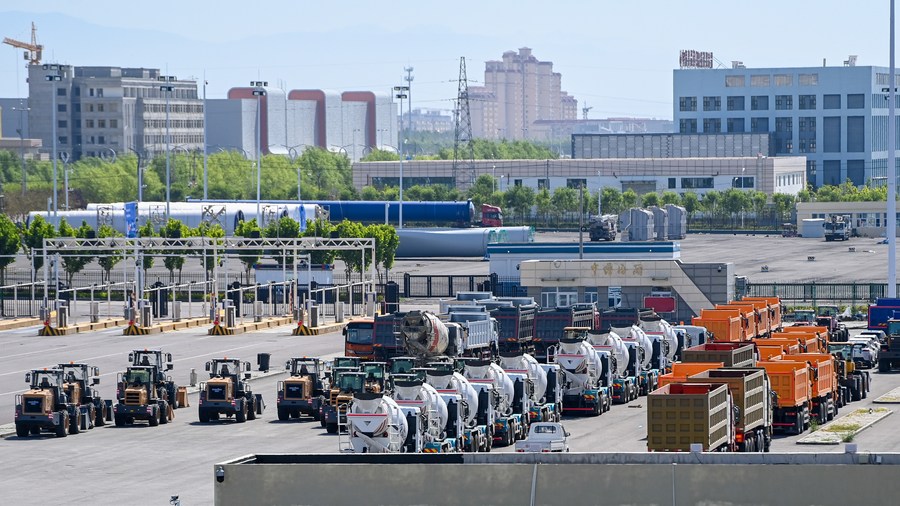
Vehicles for export park at the inspection area of Horgos port, northwest China's Xinjiang Uygur Autonomous Region, June 16, 2021. (Xinhua/Ding Lei)
The country has established 55 national-level opening-up and industry development platforms in Xinjiang, including the economic development zones of Kashgar and Horgos.
The Horgos Jinyi International Trade (Group) Co., Ltd. started the fruit and vegetable trade at the Horgos Port in the 1990s.
"Over the past decades, our business has expanded to fields of cross-border e-commerce, catering, cinemas, and tourism. I am a witness to the rapid development of the port," said Yu Chengzhong, the company's chairman.
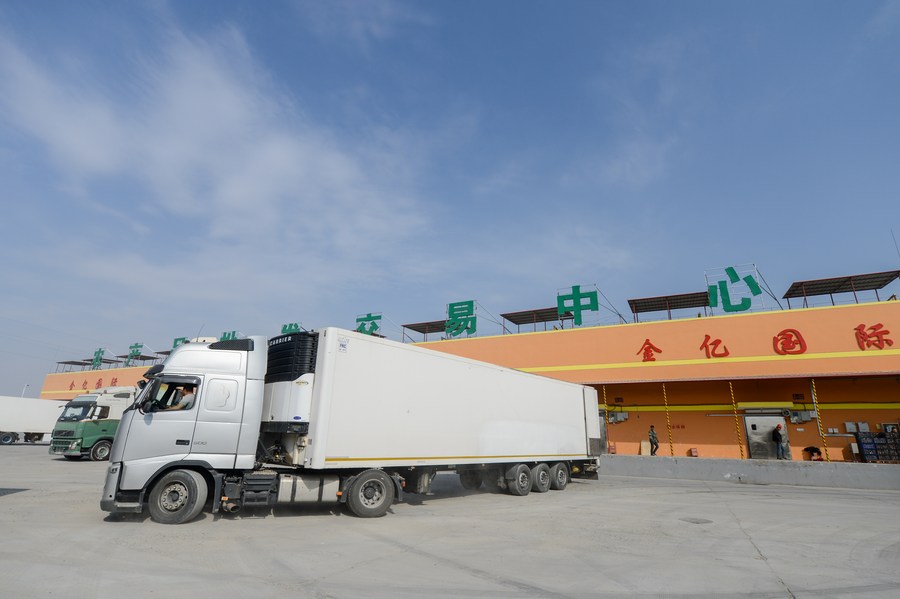
Goods for export wait to be loaded onto a truck at the Horgos Jinyi International Trade (Group) Co., Ltd. in Horgos, northwest China's Xinjiang Uygur Autonomous Region, March 25, 2019. (Xinhua/Ding Lei)
Infrastructure construction has played a vital role in boosting the region's development.
On Aug. 30, a new expressway passage linking Yetimbulak Township and Ruoqiang County in Xinjiang opened to traffic, facilitating regional travel and boosting high-quality local economic development. It is the third expressway connecting Xinjiang with places outside of the region. So far, the length of expressways in Xinjiang has exceeded 7,500 km.
Meanwhile, Xinjiang has established cooperative economic relationships with 190 countries and regions. Outbound investment from Xinjiang has involved more than 60 countries and regions, according to Mao Hui, deputy director of the regional development and reform commission.
In 2021, Xinjiang's GDP reached nearly 1.6 trillion yuan, doubling the figure in 2012.
By taking advantage of natural resources, labor force endowment, and the location of the core area of the Silk Road Economic Belt, Xinjiang's economy will usher in a boom, said Justin Yifu Lin, dean of the Institute of New Structural Economics at Peking University.
(Reporting by Ding Jiangang, Deng Yushan, Pan Ying and Xia Xiao; Video reporters: Zhou Shengbin, Ding Jiangang, Deng Yushan and Pan Ying; Video editors: Wang Houyuan, Wei Yin and Zhang Yuhong.)■



